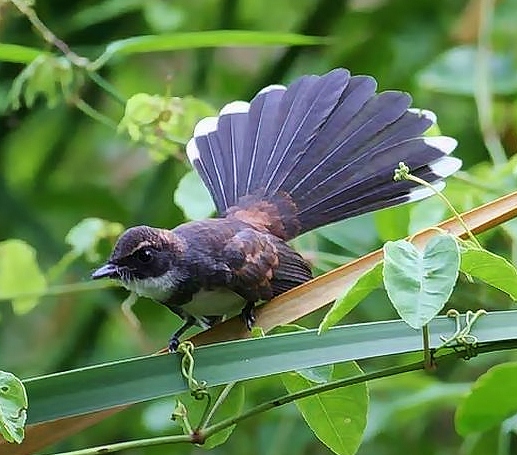 |
| Photo by Peter Ericsson (Oriental Bird Images) |
Common name:
pied fantail (en); cauda-de-leque-bicolor (pt); rhipidure pie (fr); cola de abanico pálido (es); Malaienfächerschwanz (de)
Taxonomy:
Order Passeriformes
Family Rhipiduridae
Range:
This species is found from southern Myanmar and Laos to western Indonesia, Borneo and the Philippines.
Size:
These birds are around 18-19 cm long and weigh 11-14 g.
Habitat:
The pied fantail is found in a wide range of habitats including mangroves, various dry and moist tropical forests, dry savannas, scrublands, inland wetlands, plantations, orchards, urban areas and sometimes also in sandy or rocky intertidal areas.
Diet:
These birds are insectivorous. They mainly pick ants and other insects from the ground, but can also catch dragonflies and other insects in mid-air.
Breeding:
Pied fantails breed in February-July. Both sexes build the nest, a neat cone made of stiff plant fibres held together with spider webs. It is lashed onto the fork of thin branches in a scrub or leafy creeper, or sometimes on a bamboo stem. There the female lays 2 yellowish-white eggs with brown spots, which are incubated for 12-15 days. The chicks fledge 14-15 days after hatching.
Conservation:
IUCN status – LC (Least Concern)
This species has a very large breeding range and is described as common to very common. The population is suspected to be stable in the absence of evidence for any declines or substantial threats.







